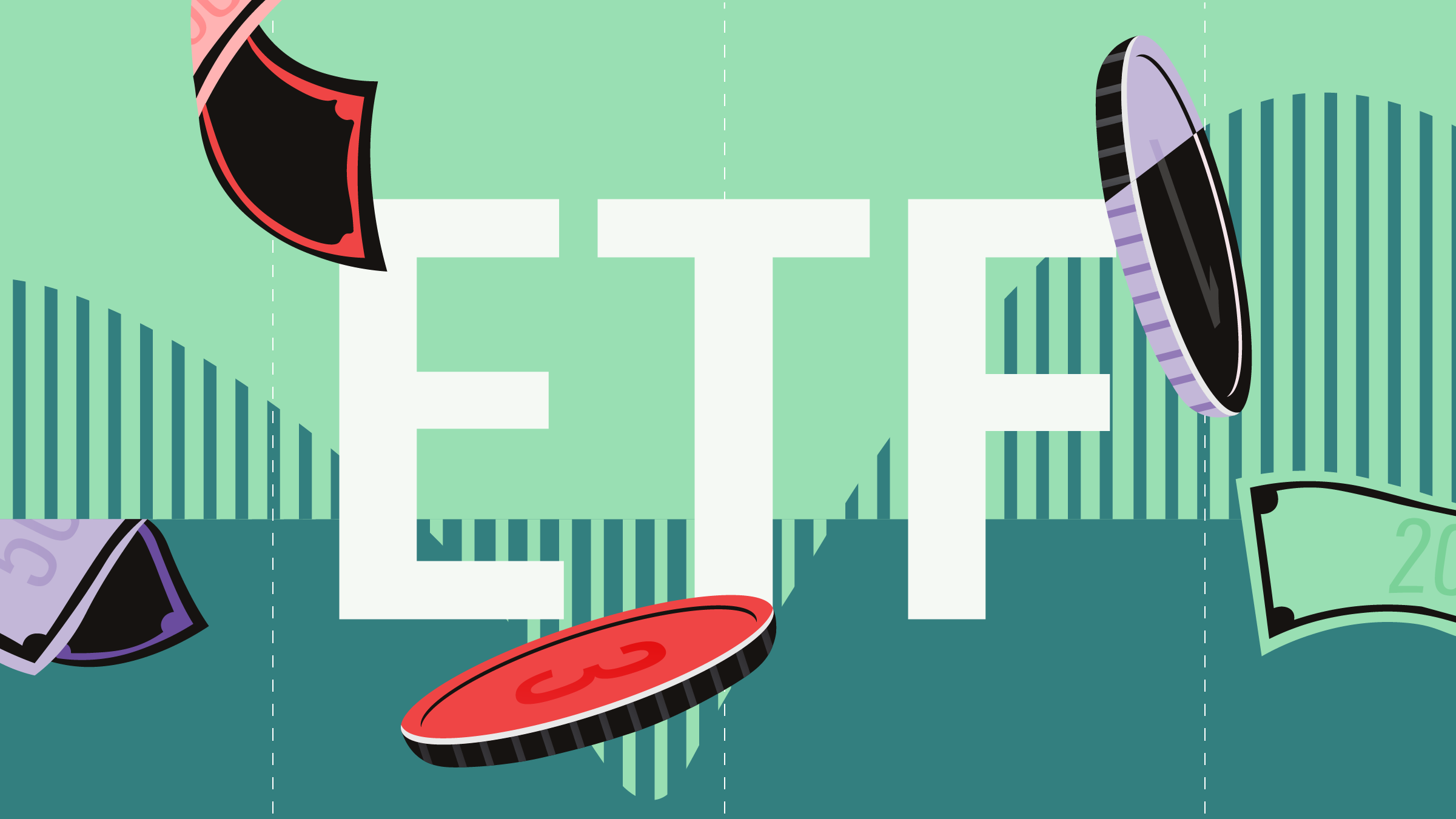
Strategic-beta exchange-traded products (sometimes called smart beta products) still claim only a relatively small share of the Canadian market, the latest Morningstar research finds. Investors are still wrapping their heads around the form of factor investing, but there’s growing interest in outcome-oriented funds.
At the end of 2019, these exchange-traded products (ETPs) represented about 9.8% of the total Canadian ETP market by assets, up from 2.8% at the end of 2007. However, their market share has held steady at around 10% since April 2014.
In Morningstar’s latest research titled A Global Guide to Strategic-Beta Exchange-Traded Products authored by Morningstar researchers Alex Bryan, Jackie Choy, Kongkon Gogoi, Ben Johnson, and Kenneth Lamont, the authors find that though over the past decade-plus, the strategic-beta space has grown more rapidly than the broader exchange-traded product market, new product launches have dwindled, and fees have come under pressure. “Strategic-beta ETPs’ growth has been driven by new cash flows, new launches, and the entrance of new players. However, more recently, these products’ market-share gains have stalled. This market segment is showing signs of maturity,” the report finds. You can get a copy of the report here.
Proving Grounds with COVID-19
With the coronavirus roiling markets, the authors point out that strategies have been put to the test.
“This episode reinforced important lessons about strategic beta approaches to portfolio construction and taught some new ones about how these products perform in stressed markets,” the authors note.
Strategic-beta is an active approach to portfolio construction. The varying performance of strategic-beta ETPs performance through recent market volatility underscores the fact that—like discretionary active portfolios—no two of these products are created equal.
“Our analysis of their performance during the first five months of 2020 reveals the differences between them and emphasizes the importance of thorough due diligence when selecting from the strategic-beta ETP menu,” the report notes.
Global Strategic Beta
As of Dec. 31, 2019, there were 1,422 strategic-beta ETPs worldwide, with collective assets under management of approximately $1.09 trillion. Assets in these products grew 36.1% in 2019. Top-line growth was buoyed by rallying equity markets, as the Morningstar Global Markets Index gained nearly 27%. Strategic-beta ETPs amassed $93.2 billion in net new cash flows, translating into organic growth of 11.6%, the report notes, adding that the slowing pace of new product launches and intensifying fee competition are signs that the space is maturing. The number of strategic-beta ETPs increased just 1.2% in 2019.
In the United States, the number of new product launches was the lowest since 2010 and, for the first time, was eclipsed by the number of strategic-beta ETPs that were shuttered. This is clear evidence that the menu has been oversaturated. A crowded and competitive landscape will continue to put downward pressure on fees. Low-volatility ETPs continued to gain market share in the U.S., Europe, and Canada in 2019.
The Global Strategic-Beta ETP Landscape in 2019
Canada
In absolute terms, Canadian strategic-beta ETPs have grown considerably over the past 12 years. However, these funds still represent a small part of the market and their market share hasn’t grown in years, the report finds. Broad, market-cap-weighted index, and actively managed ETPs dominate this market.
“Assets invested in Canadian strategic-beta ETPs grew from $518 million to $15.4 billion between the end of December 2007 and December 2019. During that time, the number of strategic-beta funds on the market ballooned from 13 to 157. So, it’s not surprising that most of the growth in assets came from inflows, which totalled nearly $12 billion, representing about 9.7% of all flows into Canadian ETPs. Inflow-driven growth has been consistent. Aggregate flows into these funds were positive in 122 out of the 144 months over the 12 years through December 2019,” the report finds.
Canada Strategic-Beta ETP Asset Growth
Despite their growth, on average, strategic-beta funds are smaller than other ETPs. So, they represent a larger share of the market by count (20.7%) than by assets.
The report notes that many of these funds have not been around long, which may help explain why they tend to be on the smaller side. Of the 157 strategic-beta ETPs listed in Canada at the end of 2019, 98 were launched after 2014. Since these funds express active bets relative to the market, many investors wait until these funds have established a multiyear record of success before investing, much as they tend to treat actively managed funds. In 2019, there were 17 new strategic-beta funds launched, which was close to the previous year’s figure. This was an eclectic group of funds that included risk-oriented, quality, and multifactor strategies, among others.
Canadian Investors Prefer Outcome-Oriented Funds
It can be hard for investors to wrap their hands around factors. However, funds designed to achieve specific outcomes like dividend income and low volatility have resonated with Canadian investors. Dividend strategies are far from the most popular type of strategic-beta ETP by assets. These funds represented about 40% of assets invested in all Canadian-listed strategic-beta ETPs at the end of 2019. That’s not surprising. Many investors, particularly retirees, love income and funds that can deliver it. Investors poured an estimated $4.4 billion into these funds over the trailing 10 years through 2019, including $494 million in 2019, which was the highest of any strategic-beta group.
Risk-oriented funds represent the second-largest strategic-beta group in Canada. They received the third-highest inflows of any group in 2019. This group primarily consists of minimum-volatility and volatility-weighted funds, which favour less-volatile stocks. Unlike the U.S. market, broad, market-cap-weighted value, and growth funds don’t attract much money here.
Strategic Beta More Expensive
The report notes that though strategic-beta funds appear to charge similar fees to other types of ETPs, based on simple averages, strategic-beta funds appear more expensive than non-strategic-beta ETPs based on the asset-weighted average fees.
“That’s because cheap broad, market-cap-weighted funds soak up a disproportionate share of the assets invested in non-strategic-beta funds. Cheaper funds tend to attract more assets across the board, which is why the asset-weighted average fees are lower than the simple averages for every group that included more than one fund. The fee comparisons are most meaningful for the equity funds since the other groups of strategic beta funds are small,” the report finds, adding that all but 10 of the 157 Canadian-listed strategic-beta ETPs are focused exclusively on equities.
Who Should Buy Strategic Beta Products?
As always, investors should invest based on their own personal situation. Before investing, investors should understand their financial goals, time horizons and risk appetite, apart from taking into account their own situations. Having said that, strategic beta ETPs might make sense for some investors.
“Investors who are looking for active exposure to a specific style (for example, value, growth, momentum, or low volatility) might consider strategic beta funds as an alternative to a fully active manager. Their lower costs and propensity to stay true to a stated style make them advantageous for investors who seek these traits,” points out Ian Tam, Morningstar Canada’s director of investment research. He adds that conservative investors might consider low or minimum volatility strategic beta products if they are seeking a less bumpy ride than a broad market index.
He adds that strategic beta funds typically leverage a set of quantitative screening criteria to come up with investment decisions. “The advantage of this is that the investment process is extremely consistent. As such, it helps if you have an understanding of the fund’s underlying investment strategy so that the outcomes do not catch you off guard. Investors should know that not all styles will outperform in each market. More aggressive styles like momentum and growth-oriented strategic beta products are expected to outperform in up markets and underperform in down markets. The opposite can be true for low-volatility strategic beta products. Investors are reminded that these products should stay true to their style, for better or worse,” he warns.




















